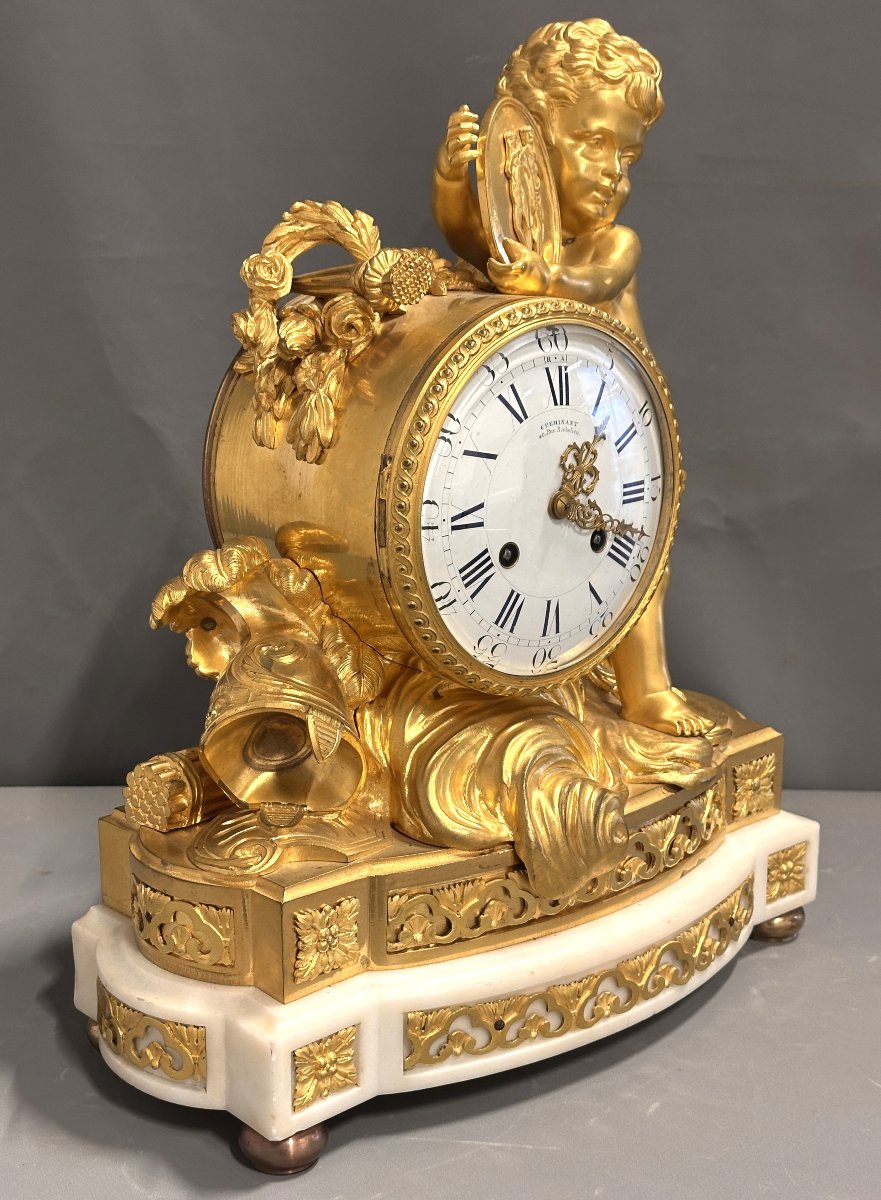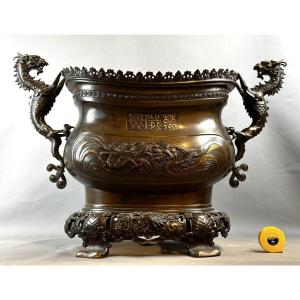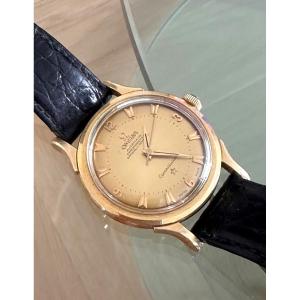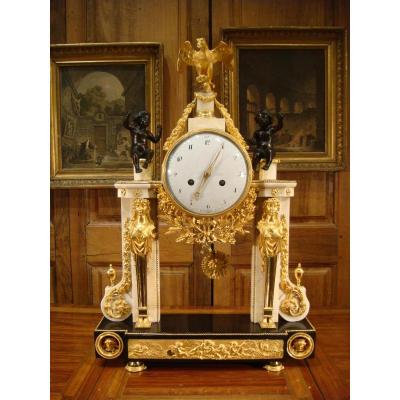This mantel clock was made circa 1880–1900, reflecting the late-19th-century revival of 18th-century Louis XVI style. During the Second Empire of Napoleon III, Empress Eugénie encouraged a return to the decorative arts of the Louis XVI period, which she greatly admiredle-bijoutier-international.com. As a result, many furnishings of the 1860s–1890s revisited Neoclassical motifs and aesthetics. In horology especially, the Napoleon III and Belle Époque eras saw a flourishing production of decorative clocks featuring allegorical and mythological figures, in the spirit of Enlightenment-era masterpiecesanticstore.com.
Decorative Motifs and SymbolismThe clock’s design centers on the Roman god of Love, Cupid (Eros), depicted as a winged putto sculpted in gilt bronze. He stands upon a cloud and supports the round clock drum, while holding a medallion adorned with a bas-relief scene of a coupletajan.com. Surrounding Cupid are various allegorical attributes. On one side rests a plumed helmet, a shield and a fasces – a military trophy symbolizing war and authoritytajan.com. On the other side are the attributes of triumphant love: a quiver of arrows with its bow, a flaming torch, and a garland of laurel and rosestajan.com.
Each element carries symbolic significance: the laurel wreath represents eternal glory, the rose signifies love, and the torch denotes the flame of passion or marriage, while the helmet and fasces allude to temporal power. Together, these motifs suggest an allegory of love conquering conflict (“Love disarms War”), or simply an eclectic classical decor blending themes of affection and valor. In any case, this decorative ensemble exemplifies the 19th-century taste for classical antiquity that characterizes the Louis XVI style as revived in that era.
Craftsmanship and MaterialsThis clock showcases the high-quality craftsmanship of French bronze work in the 19th century. The bronze elements were cast (likely by lost-wax or sand casting) and then meticulously chased by hand to sharpen all the details. After casting, the pieces were mercury gilded (fire-gilded ormolu), producing a rich and durable gold finishtajan.com. The original mercury gilding survives with bright lustre, accentuating the sculptural depth and contrasts.
The clock case is mounted on a polished white marble base adorned with a frieze of trilobed motifs and foliage, edged by a beaded gilt-bronze moldingtajan.com. The clock stands on four small toupie feet of gilded bronze decorated with beading – a typical Louis XVI style detailtajan.com. The enamel dial is white with dual numbering (Roman numerals for hours and Arabic for minutes)azurencheres.com, and is signed “Cheminant, 40 Rue Richelieu” below the center. Finely pierced gilt brass hands indicate the time.
The clock is powered by an eight-day French movement wound by a key. It features a pendulum with a Brocot suspension and strikes the hours and half-hours on a bell, as was standard for the periodazurencheres.com. The original mechanism has been preserved complete with its pendulum and key and remains in working order, which adds to the piece’s historical and practical value.
Maker: Cheminant, 40 Rue Richelieu (Paris)The dial inscription “Cheminant, 40 Rue Richelieu” identifies the clock’s maker or retailer. Cheminant was a Parisian clockmaker based at that address in the mid-to-late 19th centurydumas.ccsd.cnrs.fr. Notably, an 1857 record lists “M. Cheminant, horloger, living in Paris at 40, rue de Richelieu”dumas.ccsd.cnrs.fr, confirming his activity at that location.
Rue de Richelieu (in the 1st arrondissement, near the Palais-Royal) was a prestigious center for fine horology and bronze artistry in the 19th century. For instance, the renowned bronzier Gérard-Jean Galle (son of Claude Galle) ran his workshop on the same street (No. 93) during that periodosenat.com. Operating at No. 40 Rue Richelieu placed Cheminant within this network of Parisian makers supplying high-end clocks inspired by ancien-régime designs. It is likely that Cheminant sourced the clock’s movement from a specialized manufacturer (such as Japy Frères or Marti) and then assembled and sold the finished piece under his name. The luxurious quality of this clock and its elaborate ornamentation suggest that Cheminant catered to an affluent clientele with a taste for Louis XVI revival pieces, which were highly fashionable in the late 19th century.
Comparable Models and StyleThis Cheminant clock belongs to a broader category of Louis XVI revival mantel clocks produced in the 19th century. Its cherub-and-trophy motif directly emulates 18th-century models. For example, an original Louis XVI-period clock (c. 1780) by Gilles l’Aîné in Paris depicted Cupid courting a classical female figure, on a base adorned with a frieze of cherubsherbette.fr – evidence that such love themes were already prized in the late 18th century.
During the 19th century, bronziers frequently reproduced these rococo and neoclassical themes with creative variations. For instance, one circa-1900 version of this model depicts the infant Hercules on the medallion instead of a coupleazurencheres.com. Other examples even bear dial signatures of illustrious 18th-century horologists like Ferdinand Berthoud (applied apocryphally to suggest an earlier origin)azurencheres.com. This kind of historical pastiche still allowed for originality. In the present clock, the designer combined martial trophies with love’s emblems – a juxtaposition rarely seen in the 18th century – reflecting the 19th-century eclectic taste. Nevertheless, the overall design remains faithful to Louis XVI aesthetics, with a balanced composition, classical floral swags, and the traditional pairing of gilt bronze and white marble. The Cheminant clock is thus a late-19th-century homage to Neoclassical elegance, executed with the era’s advanced craftsmanship.
Dimensions:
Height: 45 cm,
Width: 39 cm,
Depth: 19 cm


















































 Le Magazine de PROANTIC
Le Magazine de PROANTIC TRÉSORS Magazine
TRÉSORS Magazine Rivista Artiquariato
Rivista Artiquariato